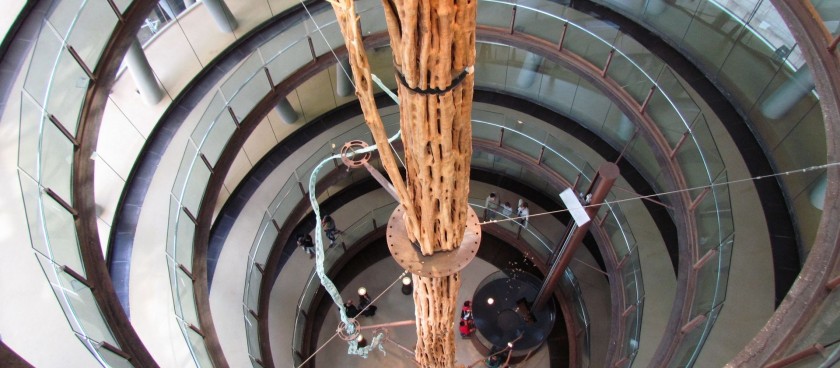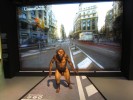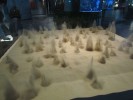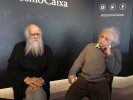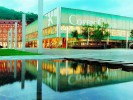- #ES17
- c. Isaac Newton, 26 08022 Barcelona, Spain
- +34932126050
- icosmocaixa@magmacultura.net
- cosmocaixa.com
- Working hours*:
Monday - Sunday and holidays
10:00 - 20:00
On Thursday, August 1 and 8, the museum is open until 21:30
December 24 and 31
10:00-18:00
December 25 and January 5 - closed - Prices*:
General admission € 5
Free entry for CaixaBank customers
Consult special prices of activities and conferences
Boys and girls up to 16 years free admission (Does not include school groups) - * - opening and closing times as well as entrance prices, are subject to alterations without notice. Visitors are advised to check before visiting.
- Children under 14 must be accompanied by an adult to visit CosmoCaixa
- 41.4129960, 2.1315510 Copy to clipboard Copy
-
#Family time , #Museums
No less a figure than Albert Einstein welcomes visitors in the entrance hall of the modernisme (the Catalan art nouveau) building that once served as a factory. His statue by the information desk looks almost real.
Visitors are taken 30 metres down into the 5th basement floor in a gigantic spiral that winds around a tropical tree from the Amazon region, an Acariquara.
The CosmoCaixa is one of Europe's most renowned museums. It is operated by the social Foundation "la Caixa".
The CosmoCaixa is not about looking, it is more of a hands-on museum with many things to try out in every corner. Different scientific disciplines are being explained didactically and interactively. You get the chance to explore physical, technical, geological, chemical and mathematical relations all by yourself in hundreds of experiments. Not only children enjoy discovering topics in the museum that are probably not the most popular ones in school.
Once you are down in the basement floor, the first thing you see is an escalator that leads to a higher floor. But the CosmoCaixa wouldn't enjoy such a good reputation world-wide if you could not already see the first attractions: the outside of the escalator is made of glass so that you can look right into it and see how it works.
You probably have heard of the Foucault pendulum back in physics class? The more than 40 m long thread pendulum with a heavy iron ball demonstrates the earth's rotation. The pendulum moves and below it the earth rotates while the pendulum keeps swinging in a straight arc. This way, every couple of minutes the pendulum knocks over one of the little steles that are arranged around it in a circle. An original bob of the kind that Foucault used is exhibited as well.
In the lowest hall in the basement visitors can try out experiments from a wide range of scientific disciplines. In a vivid way you learn which kinds of waves exist and which kinds of waves there are in the sea. A wave simulator illustrates how waves form the shores.
Or you might want to produce a sand storm and see how sand dunes develop and move. Or you produce a tornado the eye of which you can even touch with your hands! There are many more interesting experiments with water and lots of optic and acoustic experiments.
The next section is all about geology. A model shows how the shape of a volcano develops. On the “mur geològic", the geological wall, you can examine different types of rocks, such as folded rock formations that can also be found in the Alps. In addition to that, there are numerous experiments that demonstrate how the respective rock formations develop.
There are also temporary science exhibitions in the museum CosmoCaixa. Anyone who wants to find out more about our cosmos can look up to the stars at the planetarium (an extra fee is charged). Ask about show times at the information desk.
On the spacious outside grounds you can picnic or experience some more physical experiments. The largest one consists of two satellite dishes, about 80 m away from each other, which show how easily sound waves are transmitted: one person talks into the satellite dish on one end and the other one can hear the words despite the distance between the two.
For good reasons the museum enjoys an excellent reputation. Not only children will enjoy the experiments. The museum is really worth a trip, but you should arrange enough time for it (at least 2 to 3 hours).
Many scientific contexts and effects are usually very easy to understand, if you see them in a vivid experiment, for example, from the acoustics, meteorology, physics and other scientific disciplines. You won't find formulas and mathematical derivations, here you can try everything out yourself and learn directly with your senses.
Science is just a lot of fun here and a lot has become easy and understandable after the visit.
